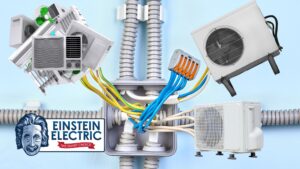Understanding Your Oregon Electricity Bill: Charges, Rates, and Usage
If you live in Oregon and receive an electricity bill, it is important to understand how it is calculated and what charges are included. Understanding your electricity bill can help you make informed decisions about your energy usage, budgeting, and saving money on your monthly bill.
Electricity bills in Oregon typically include several different charges, including:
Base Charge: This is a fixed monthly charge that covers the cost of providing electricity to your home or business, including maintaining the power grid and power lines.
Energy Charge: The energy charge is a component of your electricity bill that is based on the amount of electricity you consume during a specific billing period, typically measured in kilowatt-hours (kWh). It is an essential factor in determining the overall cost of your electricity usage. The energy charge directly correlates with the amount of electricity consumed, meaning that the more electricity you use, the higher your energy charge will be.
Electricity usage is measured by utility meters, which record the total kilowatt-hours consumed over a specific period, such as a month. These meters provide accurate readings that enable utility companies to calculate the energy charge for each customer.
The energy charge covers the costs associated with generating, transmitting, and distributing electricity to your home or business. This includes expenses related to power plant operations, maintenance, fuel costs, and infrastructure upkeep. Consequently, when you consume more electricity, you contribute to higher demand and require more resources from the utility company, resulting in an increased energy charge.
To reduce your energy charge, you can adopt energy-efficient practices, such as using energy-saving appliances, implementing insulation measures, optimizing heating and cooling systems, and practicing energy conservation habits. By being mindful of your electricity consumption, you can not only lower your energy charges but also contribute to environmental sustainability by reducing the overall demand for energy generation.
Demand Charge: The demand charge is a type of electricity fee that is commonly applied to commercial and industrial customers, particularly those with high peak energy usage. Unlike the energy charge, which is based on the total amount of electricity consumed during a billing period, the demand charge is determined by the highest rate of energy usage recorded during peak hours.
Peak hours refer to the periods of the day when the demand for electricity is at its highest. These typically occur during times of increased activity, such as weekdays in the late afternoon when businesses are operating at full capacity. The demand charge aims to account for the strain placed on the electrical grid during these peak periods.
To calculate the demand charge, utility companies measure the customer’s highest level of energy consumption within a designated peak window, usually spanning 15-30 minutes. This peak demand is then multiplied by a predetermined rate set by the utility company to determine the demand charge.
By implementing demand charges, utility companies can incentivize commercial and industrial customers to manage and reduce their peak energy usage. This encourages businesses to implement energy management strategies, such as load shifting, where energy-intensive activities are scheduled during off-peak hours or implementing energy storage systems to mitigate peak demand.
Managing demand charges effectively can lead to significant cost savings for businesses, as reducing peak energy consumption can lower overall electricity costs. It also helps utility companies maintain grid stability by minimizing strain during periods of high demand.
.
Renewable Energy Charge: The renewable energy charge is a fee included in electricity bills to cover the costs associated with generating electricity from renewable sources, such as wind and solar power. As the demand for cleaner and more sustainable energy alternatives increases, utility companies invest in renewable energy infrastructure, and the costs of these projects are passed on to consumers through the renewable energy charge.
The charge helps fund the development, installation, and maintenance of renewable energy generation facilities. This includes the costs of constructing wind farms, solar panels, hydroelectric plants, or other forms of renewable energy infrastructure. It also covers expenses related to equipment, technology, and research and development efforts aimed at improving the efficiency and effectiveness of renewable energy generation.
The renewable energy charge plays a crucial role in promoting the transition towards a more environmentally friendly energy sector. By supporting the growth of renewable energy sources, it contributes to reducing greenhouse gas emissions and decreasing dependence on fossil fuels. Additionally, it encourages the expansion of renewable energy capacity and the development of innovative technologies, ultimately driving the shift towards a cleaner and more sustainable energy future.
Taxes and Fees: In addition to the energy charge, demand charge, and renewable energy charge, your electricity bill may include state and local taxes, as well as various fees. These additional charges are typically imposed to fund specific programs, initiatives, or services related to electricity generation, distribution, or regulation. Here are a few examples:
State and Local Taxes: These taxes vary depending on your jurisdiction and are imposed by state or local governments. They may include sales taxes, excise taxes, or utility taxes, which are a percentage of your total electricity charges.
- Universal Service Fee: This fee is designed to support programs that provide access to affordable electricity for low-income households or rural areas. It helps fund initiatives that aim to ensure that essential electricity services are accessible to all customers.
- Public Purpose Charge: This charge is intended to finance programs and projects that benefit the public interest. It can support initiatives such as energy efficiency programs, renewable energy research and development, or environmental conservation efforts.
- Regulatory Fees: These fees cover the costs associated with regulating and overseeing the electricity industry. They contribute to ensuring compliance with safety standards, consumer protection regulations, and the enforcement of utility policies.
The specific taxes and fees included in your electricity bill can vary depending on your location and the regulations in place. They are typically itemized separately on your bill, providing transparency about how these charges contribute to various programs and services in the electricity sector.
Understanding these charges and how they are calculated is essential for understanding your bill and finding ways to reduce your energy costs. Here are some tips on how to read and understand your Oregon electricity bill:
Read the Bill Carefully: Take the time to read your electricity bill carefully and understand all the charges that are included. If you have any questions, contact your electricity provider or check their website for more information.
Know Your Energy Usage: Your energy usage is measured in kilowatt-hours (kWh), and it is important to know how much electricity you are using each month. You can find this information on your bill, or you can install a smart meter that provides real-time energy usage data.
Understand the Billing Period: Electricity bills are usually based on a monthly billing period, but some companies may have a different billing cycle. Make sure you know when your bill is due and when the billing period begins and ends.
Check for Errors: Mistakes can happen, so it is important to check your bill for any errors or discrepancies. Make sure the charges are correct, and if you notice any mistakes, contact your electricity provider to have them corrected.
Look for Ways to Save: Once you understand your electricity bill, you can look for ways to save money on your energy costs. This can include adjusting your energy usage habits, switching to more energy-efficient appliances, or installing solar panels to generate your own electricity.
In addition to understanding your electricity bill, it is also important to understand the different electricity rates that are available in Oregon. Here are some common electricity rates that may be available to you:
Fixed Rate: A fixed-rate plan charges a set rate per kWh for the entire billing period, regardless of the time of day or energy demand.
Time-of-Use (TOU) Rate: A TOU rate plan charges different rates for electricity usage depending on the time of day. Peak hours, when energy demand is highest, usually have higher rates than off-peak hours.
Tiered Rate: A tiered rate plan charges different rates depending on how much energy you use. The more energy you use, the higher the rate per kWh.
Choosing the right electricity rate plan can help you save money on your electricity bill. If you are unsure which rate plan is best for you, contact your electricity provider for more information.
In conclusion, understanding your Oregon electricity bill is crucial for managing your energy costs and reducing your environmental impact. By knowing how your bill is calculated, reading it carefully, and looking for ways to save, you can lower your monthly electricity expenses and contribute to a more sustainable future.
Remember to pay attention to the various charges that make up your bill, including the base charge, energy charge, demand charge, renewable energy charge, and taxes and fees. Understanding each of these charges will help you identify areas where you can cut back on energy usage to lower your monthly costs.
Additionally, it is important to know the different electricity rate plans available in Oregon, such as fixed rates, time-of-use rates, and tiered rates. Choosing the right rate plan for your energy usage patterns can help you save money on your bill.
Overall, by understanding your Oregon electricity bill and making smart energy choices, you can take control of your energy usage and costs, while also contributing to a more sustainable future for all.





















